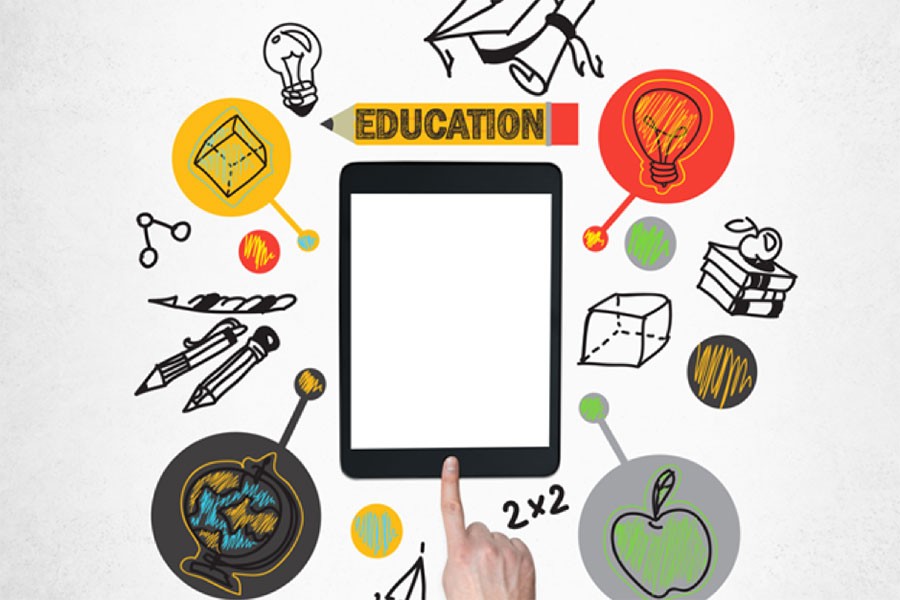Accessibility Life-Changing Grants That Can Assist You Achieve Your Desires
Accessibility Life-Changing Grants That Can Assist You Achieve Your Desires
Blog Article
Comprehensive Company Guides for Progressing Technology Education in Schools and Colleges
The assimilation of innovation education into school and university educational program has actually ended up being an essential vital in preparing pupils for an increasingly digital labor force. What certain approaches can be adopted to optimize their influence on both pupils and instructors?
Value of Modern Technology Education
As modern technology proceeds to develop at an unprecedented speed, the significance of modern technology education and learning has actually become progressively evident in today's culture. The combination of innovation into different aspects of life demands that individuals have a fundamental understanding of technical ideas and applications. This understanding not only improves employability however likewise fosters vital thinking and problem-solving skills vital for browsing a dynamic workforce.
In educational institutions, modern technology education equips pupils with the capability to adjust to quick changes in industries driven by advancement. It motivates imagination and encourages learners to involve with arising modern technologies, from expert system to data analytics. Modern technology education and learning advertises digital literacy, which is essential in an age where details is easily available yet typically misleading.

Key Components of Effective Guides
Efficient guides for technology education and learning should encompass a number of vital components to make sure that students acquire one of the most from their experiences. Initially, a distinct curriculum is vital, detailing the goals, finding out end results, and the abilities to be created. This curriculum ought to be frequently upgraded to show the quickly developing technical landscape, guaranteeing significance and applicability.
Second, thorough sources that include books, online products, and hands-on tools are important. These resources must be varied and accessible, dealing with various learning styles and preferences. Additionally, incorporating real-world scenarios and case research studies can enhance understanding and interaction.
Third, assessment approaches should be included to evaluate student progression properly. These analyses ought to be varied, including formative and cumulative examinations that line up with the discovering purposes.
In addition, professional advancement opportunities for instructors are essential. Training programs and workshops can furnish teachers with the current pedagogical methods and technical improvements.
Finally, fostering a collaborative understanding setting encourages peer communication and understanding sharing. By consisting of these essential parts, overviews for technology education can dramatically enhance the learning experience, preparing trainees for future challenges in a progressively digital globe.
Building Industry Partnerships
Structure strong sector partnerships is a vital aspect of enhancing innovation education and learning. These cooperations in between schools and services produce a dynamic environment that benefits pupils, employers, and instructors alike. By promoting partnerships with sector universities, leaders and colleges can align their educational programs with the advancing demands of the work market, guaranteeing that pupils obtain appropriate abilities and understanding.
The growth of internships, instructions, and mentorship programs functions as a keystone of these collaborations. Such opportunities supply students with hands-on experience, improving their employability and functional understanding of modern technology applications. Furthermore, sector companions can provide understandings into arising fads and technical developments, allowing educators to adapt their mentor techniques accordingly.
In addition, collaborations can facilitate accessibility to sources, such as equipment, software, and funding for study jobs. These payments improve the discovering setting and allow institutions to remain at the center of technical innovation. Ultimately, developing robust market partnerships is important for cultivating a competent labor force that satisfies the demands these days's swiftly transforming technical landscape, while also driving economic development and competitiveness in the wider community.
Implementing Innovation Programs
Carrying out modern technology programs within schools calls for a strategic method that focuses on both curriculum advancement and source appropriation. To launch effective innovation integration, institutions must first evaluate their existing framework and identify spaces in resources, consisting of equipment, software program, and employees training. This evaluation allows colleges and schools to develop a tailored strategy that aligns with their certain academic objectives.
Next, it is necessary to create a comprehensive educational program that includes emerging technologies and industry requirements. Collaborating with educators, sector specialists, and stakeholders can make sure that the curriculum remains appropriate and efficient in preparing trainees for the workforce (Education). Additionally, specialist advancement for professors is critical, as it furnishes instructors with the abilities needed to properly instruct new innovations
In addition, organizations should stress the relevance of hands-on learning experiences, such as workshops and laboratories, that allow students to use academic understanding in useful settings. This experiential technique improves involvement and cultivates important reasoning. Protecting lasting funding through collaborations and grants can help maintain and broaden modern technology programs, making certain long-term success and flexibility in an ever-evolving technical landscape.
Gauging Success and Outcomes
Assessing the success and results of innovation education and learning programs is vital for validating their influence and assisting future improvements. Effective measurement structures need to incorporate both measurable and qualitative metrics, offering a comprehensive sight of program efficiency. Key efficiency signs (KPIs) such as pupil enrollment figures, retention prices, and program conclusion percents provide valuable measurable data.

Incorporating standardized analyses can better review students' technical competencies and readiness for the labor force. Benchmarking versus comparable establishments permits contextually relevant contrasts, highlighting locations for development.
Ultimately, the continual evaluation of technology education programs fosters a society of improvement, ensuring that they Grants evolve abreast with market needs and academic requirements. By systematically determining success, organizations can not only show accountability to stakeholders but also enhance their offerings, consequently improving the discovering experience and preparing trainees for the ever-changing technical landscape.
Verdict

The combination of modern technology education and learning into college and college curricula has actually ended up being a crucial important in preparing trainees for a significantly digital labor force.As technology proceeds to advance at an extraordinary rate, the importance of modern technology education and learning has come to be increasingly evident in today's culture.In academic establishments, innovation education and learning outfits pupils with the capacity to adapt to fast adjustments in sectors driven by technology. By prioritizing innovation education, institutions can grow a generation of notified people capable of leveraging technology for societal and personal innovation. The implementation of robust analysis strategies makes it possible for organizations to gauge success and end results, inevitably boosting the general performance of technology education campaigns and preparing trainees for future obstacles.
Report this page